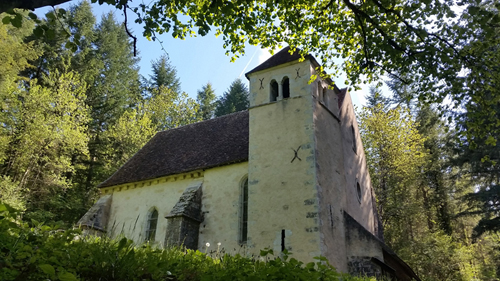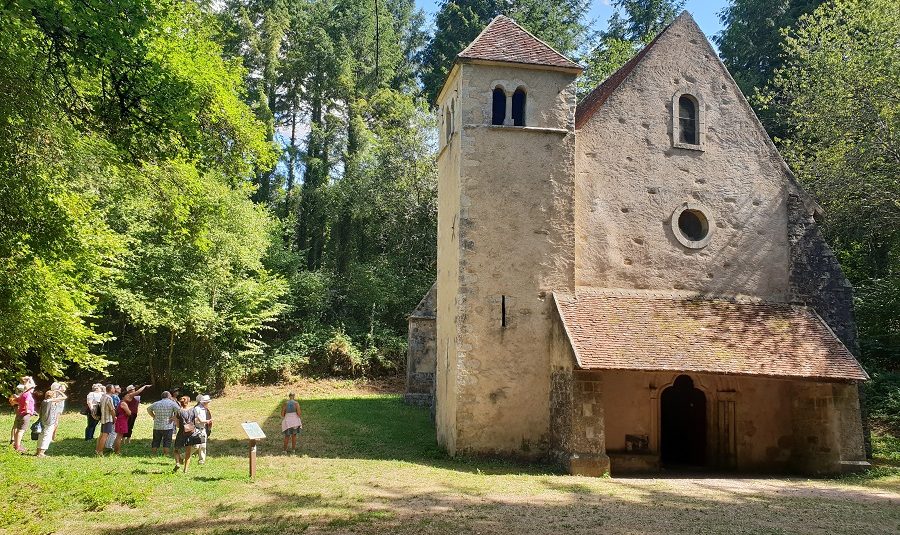End of the 55th century: the spread of leprosy and the terror it aroused prompted Guillaume, XNUMXth bishop of Auxerre and lord of Varzy, to endow his castellany with a leprosy, annexed to the Hôtel-Dieu which ensured housing the poor. Varzy, which welcomes many pilgrims who come to venerate the relics of the Sainte-Eugénie collegiate church, is conducive to the spread of leprosy. They stopped at Varzy before returning to Nevers or La Charité.
From 1219, the management of this charity establishment and in particular the care provided to the sick, fell to the monks of the abbey of Montjou in the Alps4 whose bishop Guillaume de Seignelay, 58th bishop of Auxerre, secured the precious collaboration.
Located nearly 3 km south of the town, the site was accessed by the chemin des ladres. Lepers were housed in modest wooden buildings. The Christian charity of the time led the lords-bishops, canons, bourgeois or even inhabitants of Varzy to offer legacies, gifts, inheritances, incomes in grain and money to the legacies. this is how
that the tongues of the oxen and cows slaughtered by the butchers in Varzy were offered to the lepers who collected the amount. In return, each year at the beginning of Lent, the ladres celebrated a mass for the deceased butchers. This right of "langeyage" remained until the
30th century. The maladrerie owned around 50 logs of land and meadows and XNUMX arpents of forest. Its occupants ensured their subsistence by attending, according to the seasons, to agrarian, pastoral or agricultural activities.
forest.
Over the years, the maladrerie takes shape and an authentic community takes shape with its residences, its hall, its place of worship, its source, its cemetery located to the east at the top of the hill where some modest stone crosses have been exhumed.
The construction towards the end of the XNUMXth century, of a place of worship dedicated to Saint-Lazare, patron saint of ladres, attests to the importance assumed by the establishment which receives the patients of Varzy, Oudan and La Chapelle-St- Andrew.
At the end of the 1672th century, leprosy disappeared and the site welcomed the poor passing through. The income is allocated to a clergyman of the diocese, responsible for the maintenance of the premises, to ensure the upkeep of the chapel and the continuity of the worship which takes place every Friday. In XNUMX, a royal edict confiscated the property of the lecterns then attributed to the orders of Saint-Lazare de Jerusalem and Pont Carmel, which housed the former soldiers.
This measure was canceled in 1696, in favor of the Hôtel-Dieu de Varzy, which again became the owner of the chapel, the woods and the land. He will maintain it as best he can until 1940, when the cult is abolished. It will therefore be left completely abandoned.
Saved from destruction by the Popular Society of Varzy, the chapel is deprived of its bell, melted down in 1794 to be converted into small change, like places of worship.
In 1833, Father Charton, parish priest of Varzy, sent a letter to the Municipal Council stating "that the general wish of the inhabitants of Varzy is to obtain the most urgent repairs of the Saint-Lazare Chapel which threatens an imminent fall" . He also specifies that it daily attracts the veneration of the faithful who are unanimous in wishing for its preservation.
In 1863, the bell tower found a new bell acquired by subscription. To avoid its theft, following the break-in of the door of the bell tower, it is preserved and presented to the Museum of Varzy.
Since 1931, the site has been listed as a historical monument.
On May 11, 1972, the prefect Jacques Gandouin, during his first outing from La Camosine, discovered a building with a partially gaping roof, gutted walls, a crumbling awning, a nave and a choir victims of waste pickers:
? 2 unsealed sculptures including a beautifully crafted head of an abbess surmounting the side portal
? porch moldings
? paving elements
A virgin in polychrome wood and an element of Calvary were preserved from theft by Rex Barrat, curator of the museum. But the Calvary element was stolen from the Museum.
In 1976, the chapel and the surrounding forest were sold by the hospice to the Office National des Eaux et Forêts, which agreed, by way of exchange, to sell the building and 8 meters of land to the City. available to the Friends of Old Varzy in January 000.
It was finally restored between 1977 and 1982 thanks to an investment of €77.
Types
- Religious Heritage


